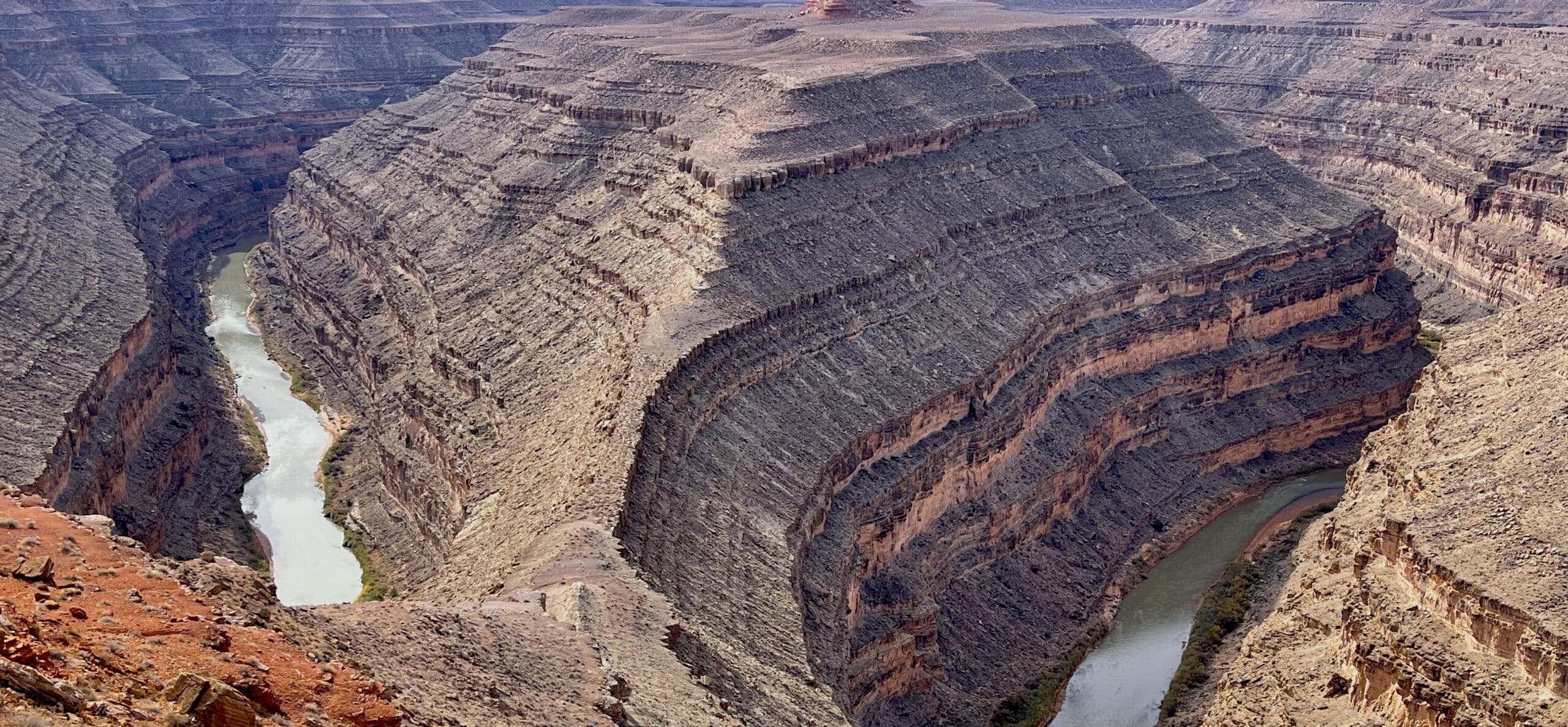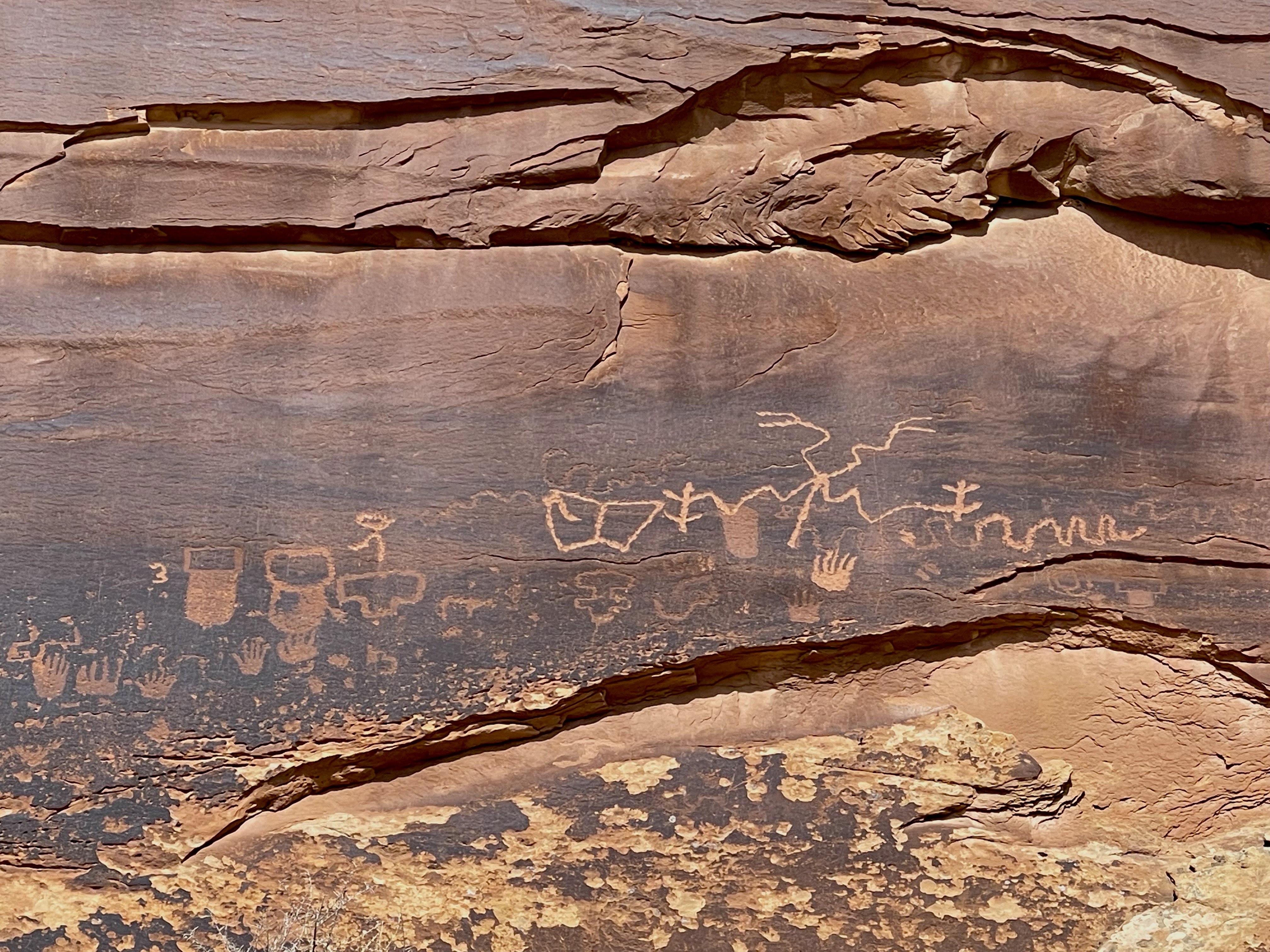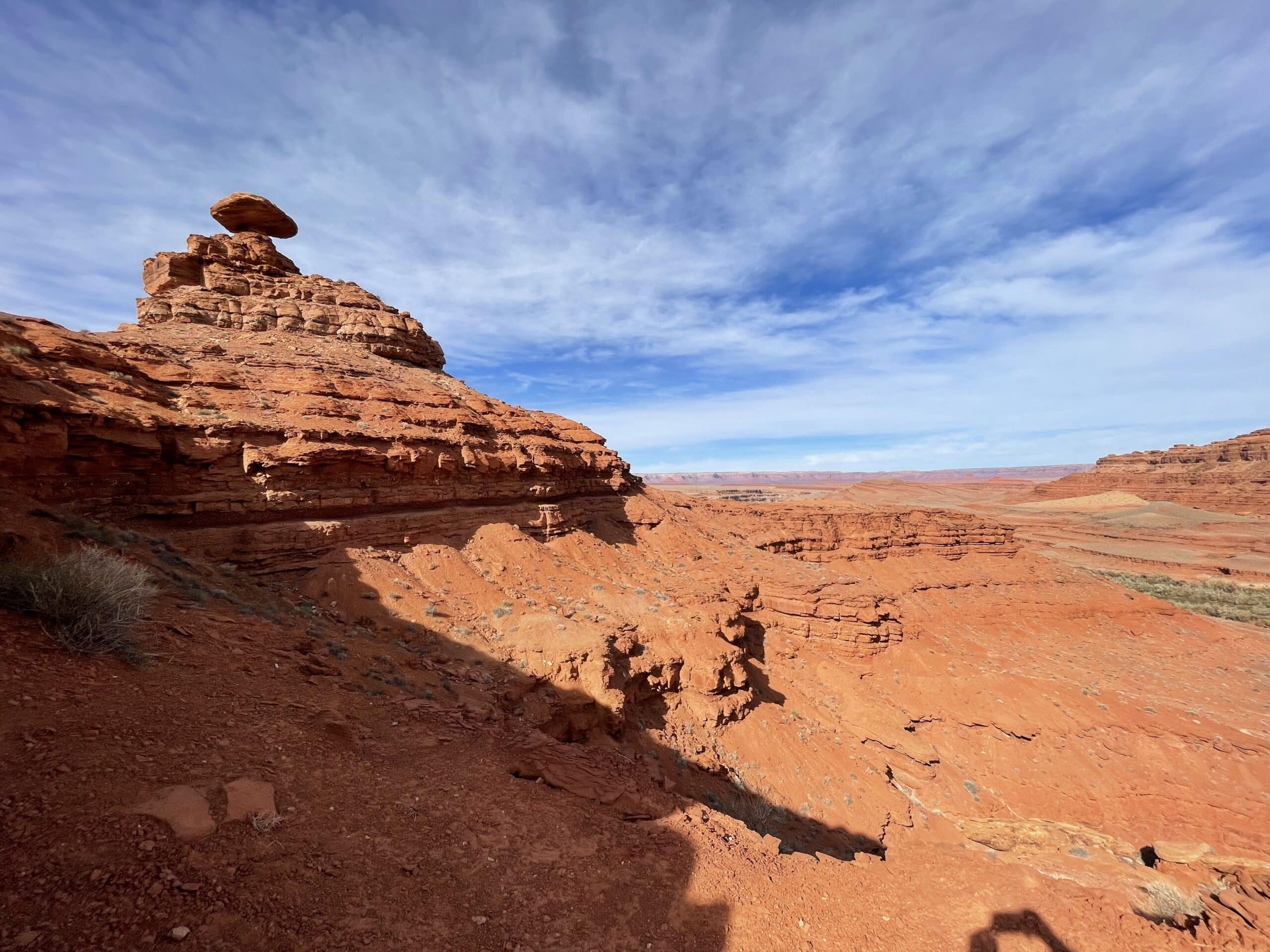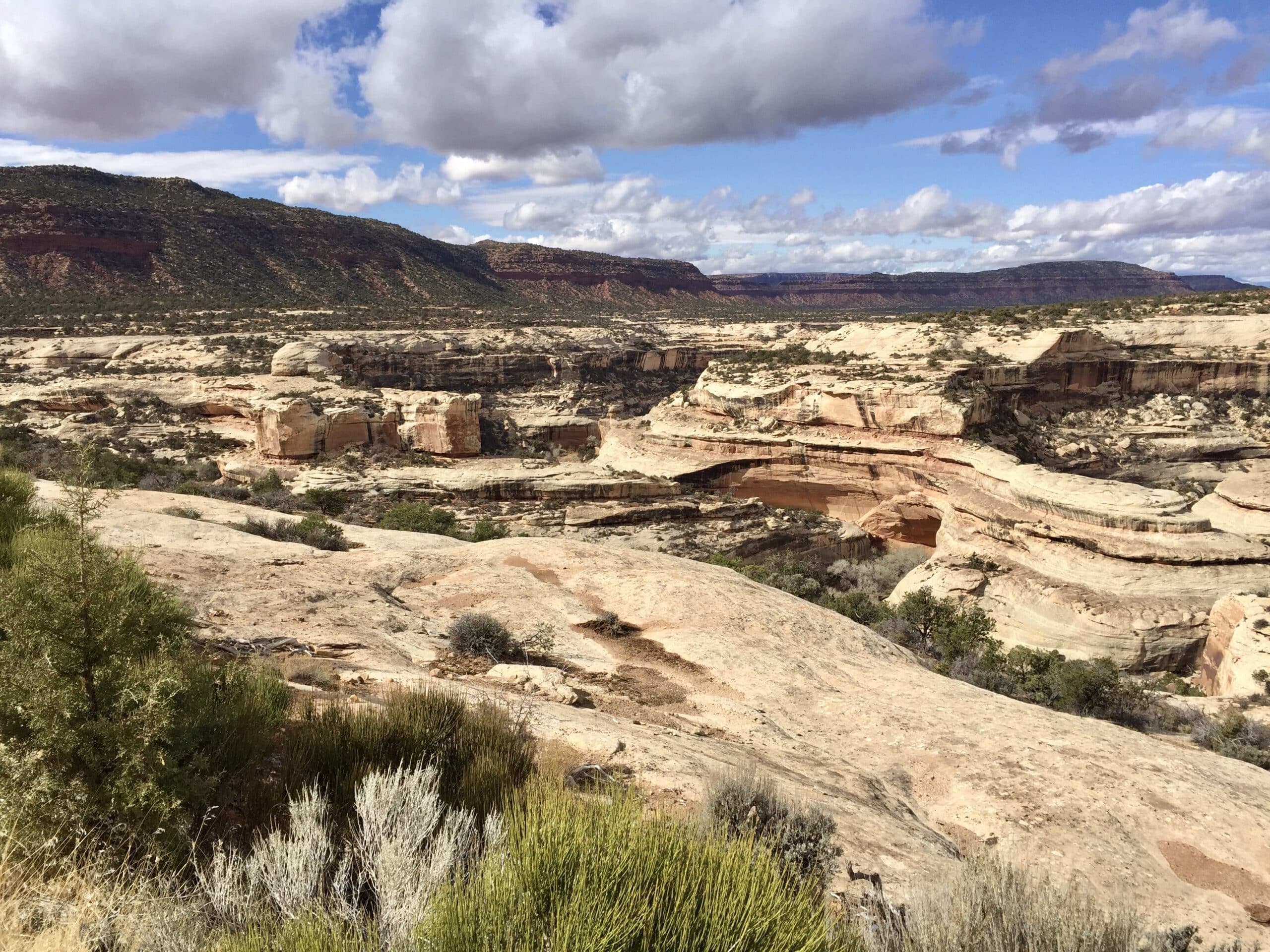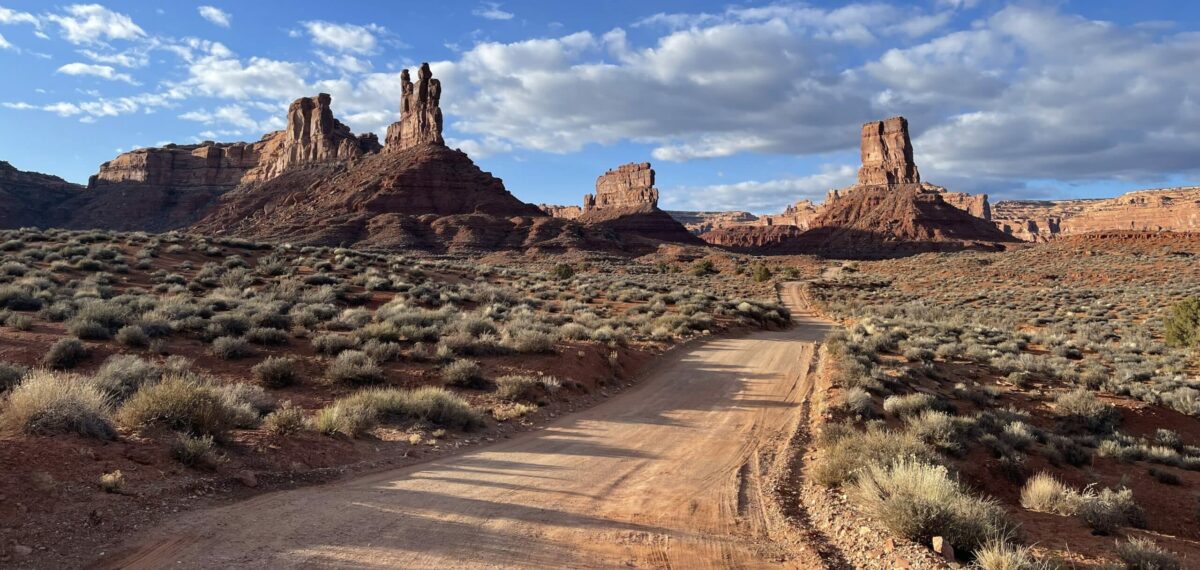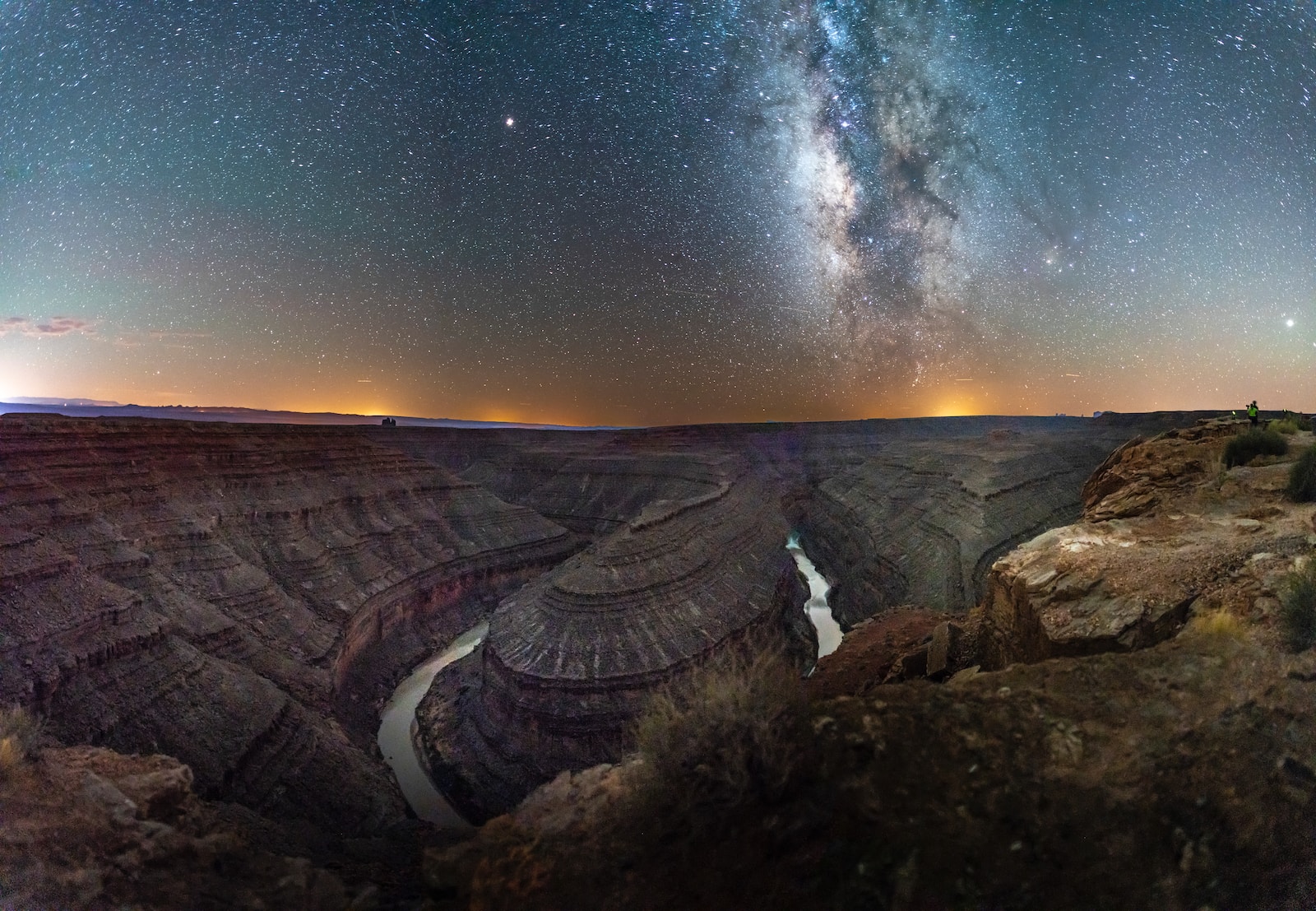
If you want to spend a few nights in Bluff, Utah, perhaps because it’s so quiet, there is more to experience in the area than meets the eye. I have a few favorite hikes and remote petroglyph sites that I won’t share. (Most locals will say the same.) But you’ll have lots of other choices. All are a journey through time and terrain.
The serpentine marvel of Goosenecks State Park showcases nature’s extraordinary handiwork. Here, the mighty San Juan River unfolds its tale, intricately carved into deep canyons, bending and weaving like a colossal earthbound serpent.
Trace the ancient narratives etched into the Sand Island Petroglyph Panel. Nearby, the whimsical Mexican Hat Rock playfully defies gravity.
Natural Bridges National Monument celebrates and protects spectacular stone formations. And as the light fades, Monument Valley’s titanic sandstone formations cast grandiose shadows across the expansive desert floor. It’s all about time and resilience out here.
Please see my other itinerary on Bluff, with recommendations for places to stay and eat.
Goosenecks State Park, Utah 316, Mexican Hat, UT, USA
Mexican Hat, UT, USA
Sand Island Petroglyph Panel, Bluff, UT, USA
Mexican Hat Rock, Mexican Hat, UT, USA
Natural Bridges National Monument, Utah, USA
Moki Dugway, Utah, USA
Best Things To Do in the Morning in Valley of the Gods & Bluff
Goosenecks State Park
Carved by the winding path of the San Juan River, Goosenecks State Park in nearby Mexican Hat is a testament to nature’s artistry over millions of years. Bear witness to one of the most striking examples of an “entrenched meander” — a geological marvel where the river coils and curves, creating deep gooseneck-shaped canyons. Take the 1.8-mile viewpoint trail to drink in the multi-layered terraces of rock revealing over 300 million years of geological history. The river meanders around tight bends, flowing a distance of over six miles while advancing merely one and a half miles on its westward course.
The San Juan River has been a life source for various civilizations for centuries. Ancient Puebloans inhabited the surrounding areas, their presence marked by nearby ruins and rock art.
What’s the best time to visit? Sunset is maybe a tad more amazing because the light lingers longer. But sunrise anywhere around here is magical too. The sun has to be fairly high in the sky, though, to catch light on the river.
Sand Island Petroglyph Panel
Within a stone’s throw of Bluff, the Sand Island Petroglyph Panel is a vivid chronicle of the area’s rich history. The ancient petroglyphs were etched into a sandstone cliff by Ancestral Puebloan people and other cultures. Look for representations of bighorn sheep, human figures, and intricate geometric designs, each a puzzle piece in a millennia-old story. Dated as far back as 1500 BC, these petroglyphs bring the past to life in a tangible way.
Mexican Hat Rock
Mexican Hat Rock, named for its unusual, sombrero-like shape, is a flat-topped rock balancing on a much smaller base. It was sculpted by the relentless forces of wind and water over millions of years. Take the kinda challenging 0.7-mile out-and-back.
Best Things To Do in the Afternoon in Valley of the Gods & Bluff
Natural Bridges National Monument
A bit further afield, about 90 minutes each way from Bluff, up beyond the glorious Moki Dugway, Natural Bridges National Monument protects some of the most impressive natural stone architecture in the Southwest. Home to the second largest natural bridge in the world, ‘Sipapu’, the park provides a spectacular landscape carved over centuries by the power of water. An extensive trail network leads to three massive bridges, offering a unique perspective on these geologic marvels.
After Dark in Valley of the Gods & Bluff
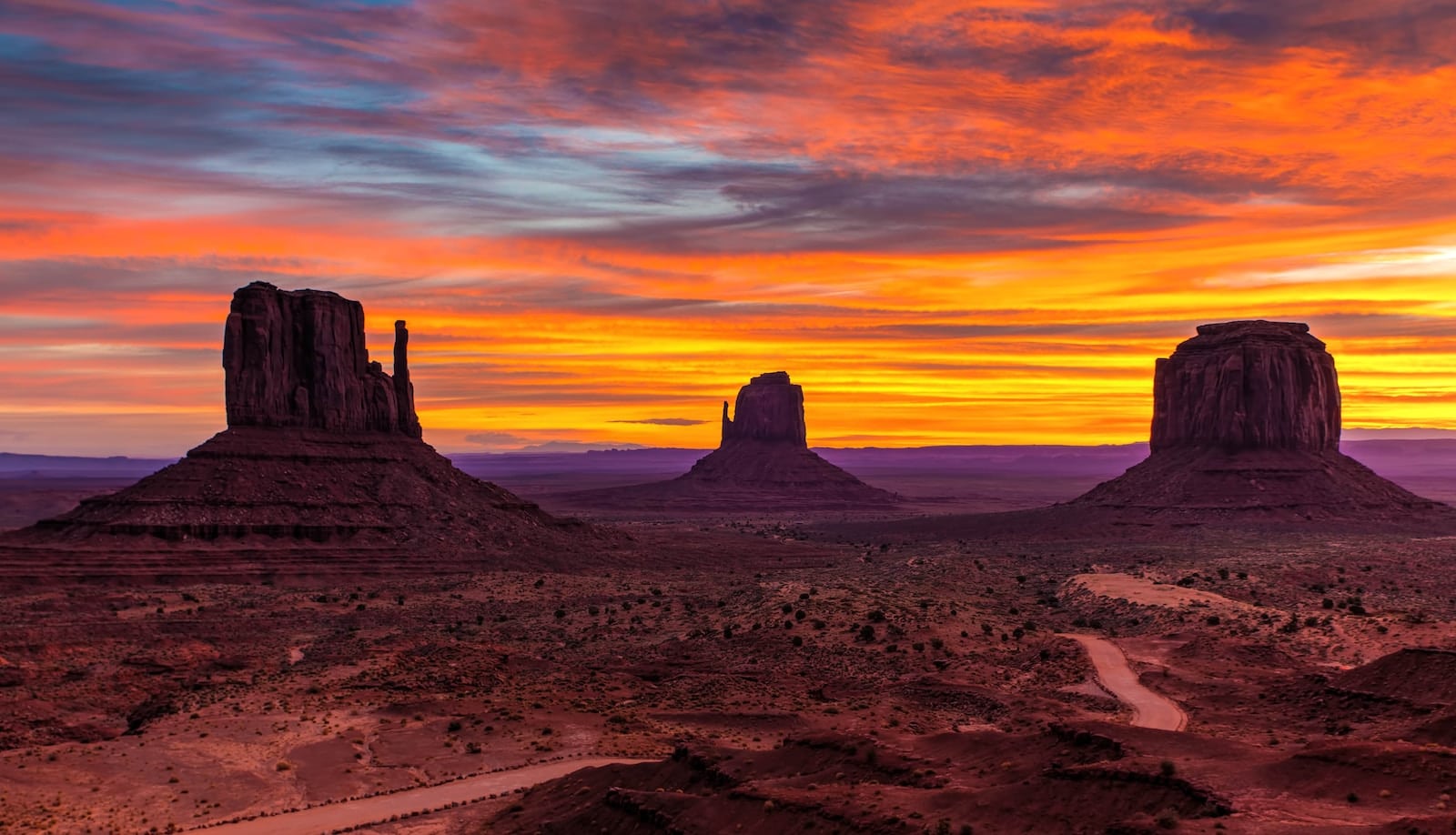
Views, the Views
Before dark, at the golden hour, on your way back to Bluff from Natural Bridges National Monument, head southwest on UT 163 for some glorious views of Monument Valley, a heartland of the Navajo Nation. Straddling the Utah-Arizona border, Monument Valley is an iconic symbol of the American West. You’ve undoubtedly seen photographs of it. This vast, sun-drenched landscape is dotted with colossal sandstone buttes that rise majestically from the barren desert floor, some soaring up to 1,000 feet.

